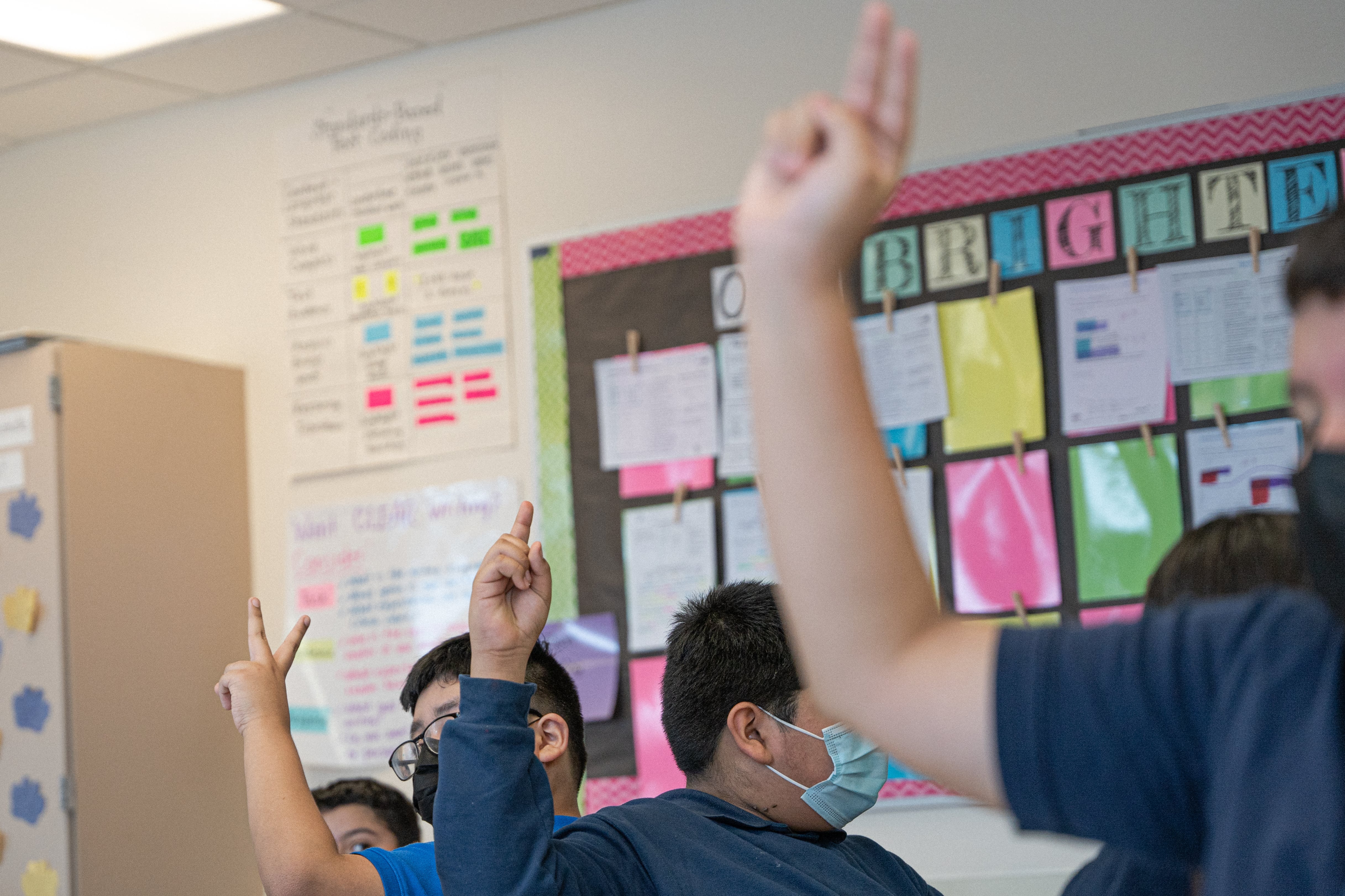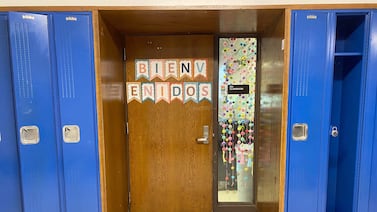A new program wants to help Indiana teachers get licensed to teach the state’s growing population of English language learners.
The Indiana Teacher of English Language Learners (I-TELL) program will pay for tuition and fees for current educators to earn the additional licensure they need to become teachers of record for students who are learning English. It’s a partnership between the Indiana Department of Education and University of Indianapolis’ Center of Excellence in Leadership of Learning
These teachers, who oversee students’ language development, are critically needed in Indiana, according to state data. A recent Chalkbeat analysis found that one-third of all districts and two-thirds of charter schools don’t have licensed teachers of record for their English learners. That’s despite state and federal staffing guidelines requiring such a teacher at each education agency.
English learner teachers may also travel between schools. But that approach can lead to high caseloads and less individual attention for English learners — a population that has grown 52% in Indiana over the past five years.
“Our COVID-19 academic impact data shows that Indiana’s English learner students experienced substantial academic impacts and have still not returned to pre-pandemic year-over-year academic growth,” said Indiana Secretary of Education Katie Jenner in a statement about I-TELL. “The best way to ensure our students accelerate their learning is to ensure they have quality, well-trained teachers supporting them.
Current teachers can take classes from one of 11 universities throughout Indiana participating in the program. Another pathway through Marian University also allows individuals who hold bachelor’s degrees to earn a Transition to Teaching license with a focus on English as a new language.
The new I-TELL program is funded by $2 million in state emergency federal funding.
Helping teachers afford licensure costs
Carey Dahncke, executive director of the Center of Excellence in Leadership of Learning, said the new program was modeled after an initiative last year to help teachers get their full licensure to teach special education.
Around 650 individuals have signed up for the special education program, Dahncke said, and some have already completed it and started working in schools.
Similarly, Dahncke said the new program aims to add hundreds of new English language teachers to the workforce by removing hurdles like cost without lowering educator quality.
“We recognize that the problem didn’t develop overnight and won’t be solved quickly,” he said.
“We want to facilitate the process so it seems accessible, so you’re not facing financial barriers or a confusing process.”
The financial burden of pursuing additional licensure is a major barrier for teachers who would like to learn how to better support their English learner students, said Laura Hammack, superintendent of Beech Grove Schools.
The district of around 2,800 students has seen a sizable increase in its population of English learners, particularly in the youngest grades, she said. As a result, the number of educators serving that population has grown from one to five — and the district hopes to double that number with the help of the I-TELL program.
Hammock said the district is also looking to alternative pathways that make it easier for paraprofessionals to earn their teaching licenses, which might be difficult for these staffers to obtain otherwise.
These pathways are critical, she said, as the state faces a declining number of students going to college and graduating from traditional teacher preparation programs.
“We’re worried about the decreasing population of individuals to pull from,” Hammack said.
District leans on grow-your-own program
In 2017, Logansport Community Schools had just two educators serving a steadily growing population of English learner students, many of whom were first enrolling as teenagers with limited proficiency in their first languages.
“It was just constantly running around putting out fires,” said Superintendent Michele Starkey, who has worked in the district for 31 years.
But a Purdue University program, funded through a U.S. Department of Education grant, allowed Logansport teachers to earn the license they needed to serve English learners for free. The district picks up any costs the grant doesn’t cover, Starkey said.
As a result, Logansport has around 40 licensed English learner teachers, with 13 more in the process of completing the program. Those who earn the license move up on the district’s pay scale and sign an agreement to stay with Logansport schools for at least five years, Starkey said.
The new assistance program from the state may give teachers more options to earn their licensure, and help the district with its share of the costs, she added.
The district’s grow-your-own efforts have made it more agile in addressing student needs, said Tami McMahan, director of English language learners — especially in the midst of a spike in the enrollment of newcomer students, or students who have never attended U.S. schools before.
This August, the district saw as many newcomer students enroll as it had the entire last school year, Starkey said. Around 46% of the district’s 4,266 students are English learners, and of that population, 69% qualify for free and reduced-price lunch.
English learner teachers meet regularly to discuss how best to serve these students, McMahan said. They analyze test results in depth and provide both formal and informal professional development to their colleagues.
Their expertise has also led to a greater awareness of students’ personal needs — the district started a food pantry and a clothing closet for those who need it.
After learning that some English learner students were working overnight shifts, the district offered a semi-independent study program that would allow them to earn credits, take language development, and access health and support services in fewer school hours a day. That gives them more time to sleep.
“For students, it comes down to their needs being met,” McMahan said. “We can’t do better till we know better.”
Aleksandra Appleton covers Indiana education policy and writes about K-12 schools across the state. Contact her at aappleton@chalkbeat.org.








